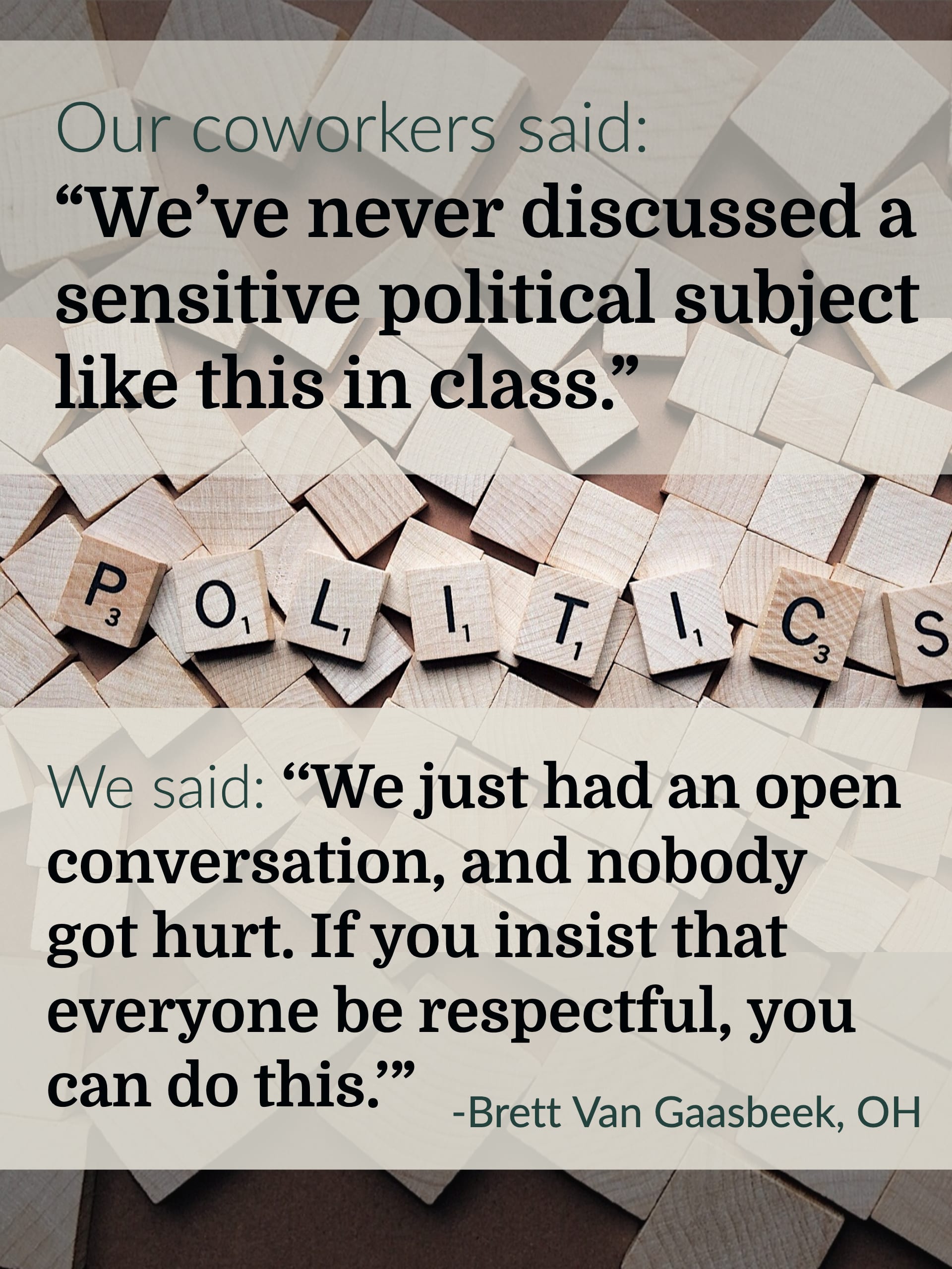Meet Our Teachers
Brett Van Gaasbeek

Instead of the Usual PD: A Primary Document Roundtable
Ashbrook education is deceptively simple. “We sit in a room with a professional historian who asks us probing questions and then just lets us talk.” No other “professional development” program draws on the teachers’ own insights, says Brett Van Gaasbeek, a graduate of Ashbrook’s Master of Arts in American History and Government program. “I learn more listening to my colleagues who teach the same stuff I do than I did when I was an undergrad listening to my history professor lecture.”
Convinced that high school students learn best in the same way, Van Gaasbeek adapted the Ashbrook approach to his own classroom at Northwest High School. Each year he hands his AP US history students a binder of primary documents. This is the reading for the course; the state-issued textbook simply provides historical context. Every Friday, students debate the issues raised by a pair of related documents.
Sharing the MAHG Approach With Other Teachers
Sad when he graduated from the MAHG program last August, since it meant no more summer seminars in Ashland, Van Gaasbeek hit on an idea. Why not share the MAHG seminar approach to primary documents with colleagues?
He persuaded his department chair to devote part of a teacher workday to a “primary document roundtable.”
Social studies teachers and the special education teachers who support their classes were invited, as well as English faculty (a new teaching standard requires that they teach nonfiction historical texts). Van Gaasbeek led a discussion of two documents in Ashbrook’s 50 Core Document collection: the Declaration of Independence and Calvin Coolidge’s speech on the 125th anniversary of the Declaration.
“Does Our Society Still Hold These Principles?”

A surprising number of Van Gaasbeek’s colleagues had not actually read the entire Declaration. “So we did what Ashbrook seminars do,” Van Gaasbeek said. “We asked, ‘Would this document motivate you to take a weapon and stand your ground against the British?’ They talked about taxes and government search and seizures, saying, ‘I wouldn’t want the British taking over my home and my things.’” Then Van Gaasbeek asked about the speech of Coolidge: how did his economic policies relate to principles in the Declaration? Finally, “We asked, ‘Does our society still hold these principles?’
All 20 teachers wanted to repeat the experience. So Van Gaasbeek’s department chair led the next roundtable. Teachers discussed speeches of Lyndon Johnson and Ronald Reagan on government welfare programs. “Many of our students receive welfare support. What can we do to help them if the system has not worked as intended?
“Our coworkers said, ‘We’ve never discussed a sensitive political subject like this in class.’ So we said, ‘We just had an open conversation, and nobody got hurt. If you insist that everyone be respectful, you can do this.’”
Doing it helps students talk through and own their own reasons for loving America. “Many of our graduates join the military. Why are they willing to put their lives on the line for this country?” Van Gaasbeek asks. “I hope it’s because they understand our structure of government and fight to preserve it.”
Ultimately, the decision whether to preserve our structure of government is fought on an intellectual battlefield. No one can be expected to long defend what he does not understand. Both teachers and students, Van Gaasbeek has found, reach understanding soonest through the give and take of respectful conversation and debate.
